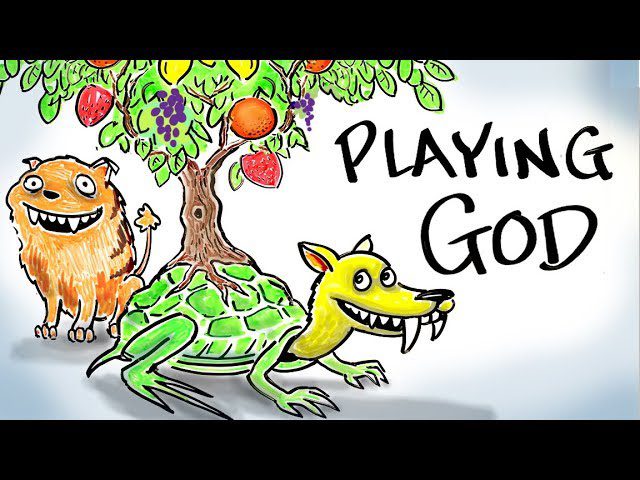PLAYING GOD – The Story of Synthetic Life
Head over the Professor Dave’s Channel for some really awesome educational videos! https://www.youtube.com/channel/UC0cd_-e49hZpWLH3UIwoWRA
在 2016, the first synthetic organism of original design was created. When you hear this statement, what does it make you think of? The word synthetic does imply that something was built by man. But if you’re imagining artificial intelligence, or robots, or anything mechanical, you’re way off the mark. Synthetic life refers to actual, biological, living organisms. How can such a thing be synthesized? To put this achievement into context, let’s examine the history of chemical synthesis. Up until the early 19th century, it was a widespread belief that living organisms, along with all the stuff inside them, had some kind of special essence, or life-energy. These substances could only come from other life, and not from non-life. This notion was called vitalism. But in 1828, Friedrich Wohler proved that this is not the case by synthesizing urea, a compound found in the human body. On that day, organic chemistry was born. In the decades that followed, chemists learned how to synthesize all kinds of compounds, and by the latter half of the 20th century, this field had become incredibly sophisticated, thanks to an expansive understanding of the molecular world. 在 1972, a team led by Robert Burns Woodward completed a landmark synthesis of Vitamin B-12, and other efforts have yielded the possibility of mass producing compounds for use in medicine, or as materials for the development of new technologies.
But in a way, an echo of vitalism persists to this day. There are those who think that if humans synthesize a natural product, like a vitamin, that it must be inferior to one that nature makes. This is not so. Nature builds these molecules just like we do, and it has its own biosynthetic pathways to make them. But nature’s laboratory is inside living organisms. These are delicate systems, so chemistry must be done at a very specific temperature and pH, and only with the materials at hand. In our own laboratories, we have no such limitations. We can put whatever we want in a flask and heat it up, cool it down, use strong acids and bases, exotic compounds that don’t exist in nature, and most importantly, sentience. We can decide what chemistry to do, rather than relying on the chemistry that nature has stumbled upon by blind chance over the millenia. For this reason, we can do chemistry that nature simply can’t, and we can often arrive at the same products with much greater efficiency. Whatever the molecule might be, if nature makes it, or we make it, there’s no difference. If two molecules have the same atoms connected in the same way, they’re the same, no matter how they got there. If this were not true, the field of organic chemistry could not exist, and the field is thriving, to say the least.
From simple molecules, we soon learned how to synthesize large biomolecules, like proteins and DNA. We developed techniques like solid phase peptide synthesis, which makes it absolutely trivial to synthesize any protein we want. The advent of CRISPR and gene-editing technology has made it easy to edit DNA sequences. And now, Craig Venter and his team have taken the next step. Syn 3.0 is an entire synthetic genome, consisting of only 473 genes, the fewest of any living organism. This genome, when expressed, takes the form of a single-celled organism, one that has never existed in nature. It was invented, created, built, manifested, whatever verb you want to use, by mankind. If going by a certain definition of a god, we are now one, as we have created life.
Synthetic life is the final nail in the coffin for vitalism. What chemists have known for almost two hundred years is now clear as day for all to see. The ingredients of life can be built by humans. Beyond synthesizing basic organic compounds, we can now create an entire self-replicating living organism from scratch. What is the next step? Synthetic microorganisms that rapidly consume carbon dioxide to counteract climate change? Others that produce clean fuels? Could we even make synthetic plants and animals, creating entirely new species dreamt up purely by imagination? What should we create, and what shouldn’t we create? Time will tell, but the possibilities are truly endless.
Please Support After Skool on Patreon at https://www.patreon.com/AfterSkool
To Check out the After Skool Graphic Novel visit our website https://www.afterskool.net/
For more weekly animations, please subscribe!













